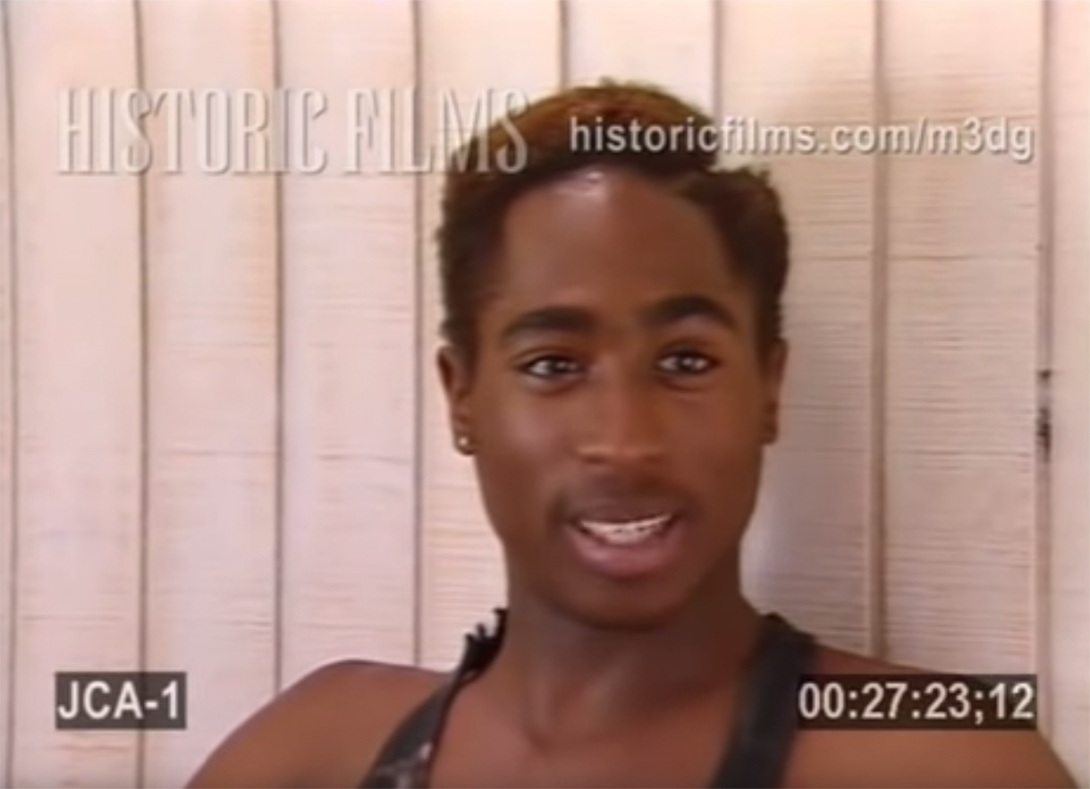
And he always respected the “ Old School”: “What more could I say, I wouldn’t be here today/ If the old school didn’t pave the way.” His emotions, while often indignant and angry, had a wider range of expression. While he treated many of the same themes and subjects as gangsta rap, like street and gang violence, drugs and sex, Shakur’s songs were never motivated by the kind of shocking hyperbole or gratuitous raunch so typical of young rappers seeking fame. In his solo work, he returned to the West Coast gangsta rap genre with the addition of conscious and critical social commentary. Shakur broke away from this trend, even breaking from the alternative rap of Digital Underground.

The rise of MC Hammer’s simplistic, apolitical pop-rap was reliant on repetition and samples, paving the way for entertainment-driven rap, like Vanilla Ice, and offering a marketable and safe cultural product for white audiences. This period of hip-hop was a time of departure from the harder, aggressive gangsta rap of West Coast groups like N.W.A.

He worked as a roadie and dancer extra for a tour that landed him a feature in their EP “ Same Song.” In the music video, he appears as an African king and sets himself apart from the more comedic commercial and conventional rappers. Shakur’s artistic break came with the Digital Underground, an alternative funk-based hip-hop collective from Oakland, Calif. Shakur’s songs were never motivated by the kind of shocking hyperbole or gratuitous raunch so typical of young rappers seeking fame. A sudden cross-country move to the San Francisco Bay Area disrupted his schooling, which then ended when he dropped out of Tamalpais High School. In a 1988 interview, a 17-year-old Shakur comes across as a soft-spoken but assertive teenager, giving quick but thoughtful answers, including an ambitious critique of American educational curricula and contemporary politics. Túpac Shakur was also a member of the Young Communist League USA and studied jazz, poetry, dance and theater in high school at the Baltimore School for the Arts. Her activism informed his socially conscious or “woke” Black upbringing. In “ Dear Mama,” his mother-who was an activist and a member of the Black Panther Party- is heard recounting her acquittal and release from prison a month and three days before Shakur was born. He was a lover of Shakespeare and Van Gogh, Geronimo and Machiavelli, but above all he loved his mother, Afeni Shakur, a frequent subject of his music and interviews. Shakur’s formation was marked by the suffering of struggle and poverty, but also by love expressed through Black empowerment and the arts. Some have called him “Black Elvis.” “Hip-hop ain’t been the same since Tupac moved to Cuba on us,” raps Eminem in “Fubba U Cubba Cubba.” His murder, which remains unsolved, was widely disbelieved and mythologized numerous theories and explanations continue to this day. 13, 1996, he succumbed to his wounds after being shot six days earlier in Las Vegas. Shakur suffered a tragic and violent death at the age of 25. (This excludes a short period when he identified as MC New York.) 2Pac released four studio albums, including his 1991 debut, “ 2Pacalypse Now,” and his final historic double album in 1996, “ All Eyez on Me.” His first posthumous album was released under his pseudonym, Makaveli. He never entirely replaced it in the common hip-hop custom when he became a rapper. At age one, his mother renamed him after the 16th-century Incan monarch. He would have been 50 years old this week.

Túpac Amaru Shakur II was born Lesane Parish Crooks on June 16, 1971, in East Harlem. At his execution, as his former subjects cried out, the captured king calmed them with these Quechuan words: “Pacha Kamaq, witness how my enemies shed my blood.”

Túpac Amaru was the last Incan monarch, hunted down and publicly executed by the Spanish in the presence of the Bishop of Cuzco. Túpac Shakur, “After the Miscarriage” in The Rose That Grew from Concrete “There will be no insufficiency in love.”


 0 kommentar(er)
0 kommentar(er)
